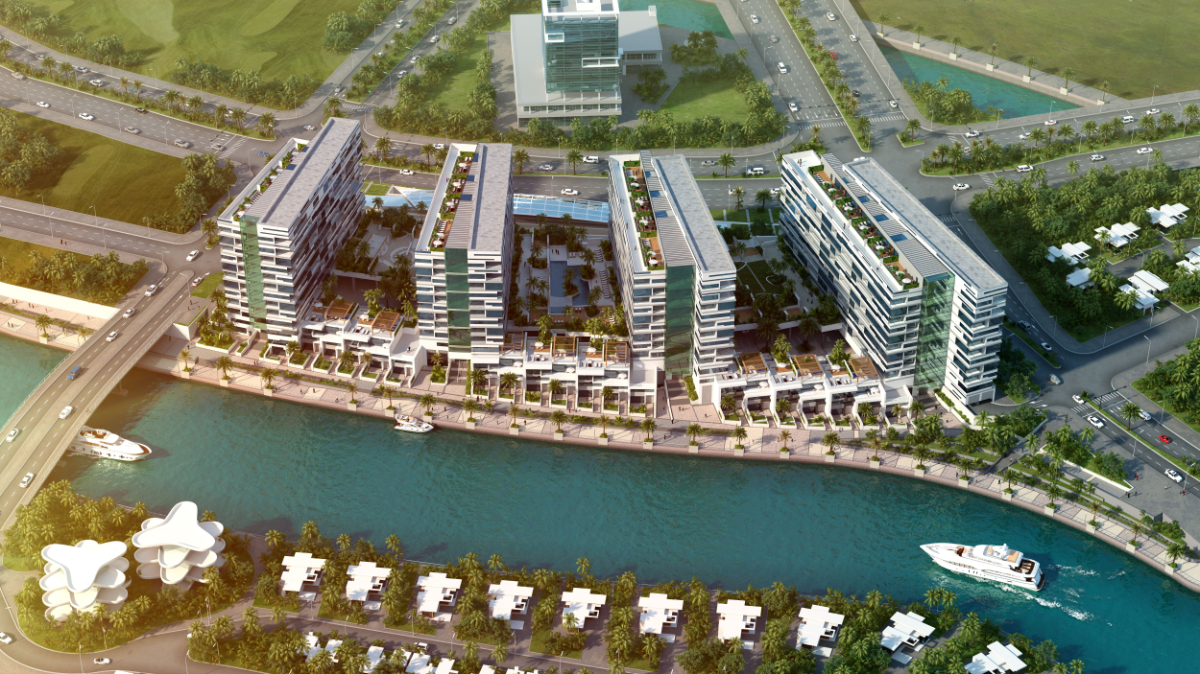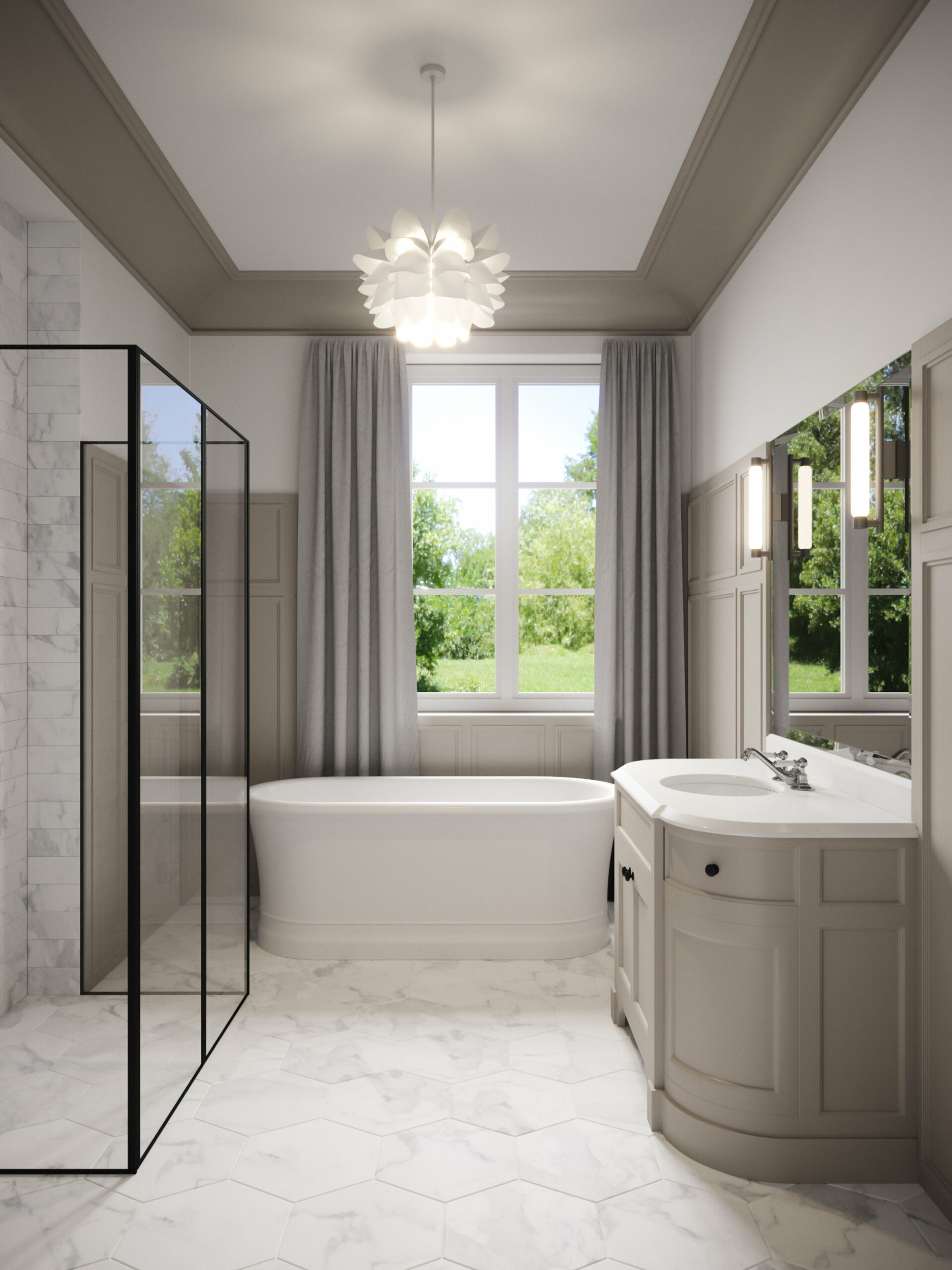Architectural Visualization: A View to a Thrill
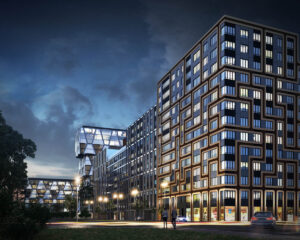 Recent innovations in 3D rendering as well as modern animation techniques have helped architects, builders, engineers and developers create a clearpicture of what a house or building could look like even before they are even built. An appreciation of the final outcome is the key in getting your clients to agree to the project. This challenging and daunting task can now be best realized with Architectural Visualization.
Recent innovations in 3D rendering as well as modern animation techniques have helped architects, builders, engineers and developers create a clearpicture of what a house or building could look like even before they are even built. An appreciation of the final outcome is the key in getting your clients to agree to the project. This challenging and daunting task can now be best realized with Architectural Visualization.
The process of Architectural Visualization looks into creating a detailed perspective of a project. Advances in computer graphics and digital rendering can now provide an almost mirror-image representation of a building or a house. Clients often times express difficulty in visualizing the many angles of a plan if it were conveyed as a narrative or word of mouth. But by displaying the render with a custom graphic animation, you can now showcase a full and detailed presentation to your customer.
Who Needs Architectural Visualizations?
For professionals who value their time and their clients’ resources, Architectural Visualization is the key to effectively and efficiently communicating your project. Among those who can make use of this solution in their respective fields are:
- Architects
- Builders
- Interior Designers
- Real Estate Agents
- Urban Planners
- Mechanical Engineers
Why Hire an Architectural Visualization Artist
For those who want to communicate their master plan with simplicity and ease, an Architectural Visualization Artist is exactly the person you need to lay the ground work for your vision of the project through computer animation. The benefits of which are:
Cost effective. Building a scale model or sample houses can turn out to be more expensive. Architectural Visualization gives you a solution to render your plans in a digital format, with crisp and high resolution images.
Flexibility and ease of use. Improvements and changes have always been an integral component in a design’s creative process. Architectural Visualization provides that flexibility for revision, saving you time and money by resolving issues before even building the structure.
Client Appreciation. Illustrating both the internal and external elements of a building project – from color to texture to the kind of materials to be used in construction, sets the look and feel to match the client’s needs and preferences. Architectural Visualization dictates the tone of your presentation from getting that acknowledgement for you to go ahead with the project.
Marketing Pitch. For real estate agents and developers, Architectural Visualization of your master plan plays a critical role in marketing your project. This is the only marketing pitch you will ever need for your target market to generate interest in your venture. A detailed digital picture of your plan that highlights your development efforts and amenities will make every sale easier to close.
How Long Does the Process Take
Depending on the scale or magnitude of your requirements, a visualization project can range between a few weeks to several months. Your visualization artists will be with you in every step of the design process to ensure that we communicate your ideas the way you want it to be.
How to Choose a Great Artist
Hire experience and trust competence. Over the years, our visualization artists have been molded with the many meticulous requirements of architects, builders, developers and engineers. We pride ourselves with every successful delivery of an architectural visualization project. This experience has also given us the training and discipline to further improve our skills in the art of digital rendition and computer animation. We always look forward to the next challenge as an opportunity to master our craft as Architectural Visualization artists.
If a picture can paint a thousand words, we invite you to look at our portfolio. And if you like what you see – or may require more samples of our work – get in touch with us and our team will be more than happy to assist you.
Interesting in seeing more of our work. Check it out here: https://pixatecreative.com/portfolio/
Jonn Kutyla
Drones for Civil Engineering and Architecture
Using drones for civil engineering and architecture can be incredibility fun, but it can also be very helpful to move your projects through the approval stage as well. The modern drone with a camera practically flies its self, connecting to a GPS satellite and locking into place. In a recent project in Hampton, NH we took our drone for a spin! Here is our drone taking a picture of us, as we took a picture of it. That is me with the iPad.
 Drones can be extremely helpful for use in architectural visualizations. There are several reasons they are so effective.
Drones can be extremely helpful for use in architectural visualizations. There are several reasons they are so effective.
- Not many people are using drones yet, so the pictures are unique. When something is unique, people pay attention to it. A unique image allows for you to grab people attention because it is something they are not used to seeing.
- It is much less expensive to use a drone than a helicopter. To rent a helicopter you are going to look at spending $3k – $5k or so just to get the helicopter in the sky.
- Drones can show you a the entire context of what is around.
- Ariel photos are much harder to recreate, so there can be more artistic license because the perspective can never be seen by the average person walking down the street.
- Not many people are using drones yet, so the pictures are unique. When something is unique, people pay attention to it. A unique image allows for you to grab people attention because it is something they are not used to seeing.
- It is much less expensive to use a drone than a helicopter. To rent a helicopter you are going to look at spending $3k – $5k or so just to get the helicopter in the sky.
- Drones can show you a the entire context of what is around.
cute phone casesphone caseyukon vape
- Ariel photos are much harder to recreate, so there can be more artistic license because the perspective can never be seen by the average person walking down the street.

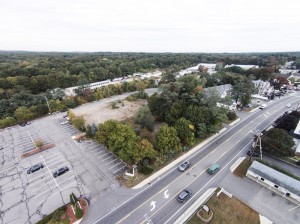 There is a common theme around architectural renders. The general population has a very hard time picturing how projects will look when they are complete. Control the narrative and show people who it will look. You will be rewarded by having your projects go more smoothly. Drones can be a really powerful tool in your arsenal, so make sure and develop some relationships with companies that have them, or pick one up and learn to fly it. We will show you a really good build in a future post, or you can email me at jkutyla@pixatecreative.com and we would be glad to share our setup with you.
There is a common theme around architectural renders. The general population has a very hard time picturing how projects will look when they are complete. Control the narrative and show people who it will look. You will be rewarded by having your projects go more smoothly. Drones can be a really powerful tool in your arsenal, so make sure and develop some relationships with companies that have them, or pick one up and learn to fly it. We will show you a really good build in a future post, or you can email me at jkutyla@pixatecreative.com and we would be glad to share our setup with you.
The ROI of Outsourcing Architectural Rendering
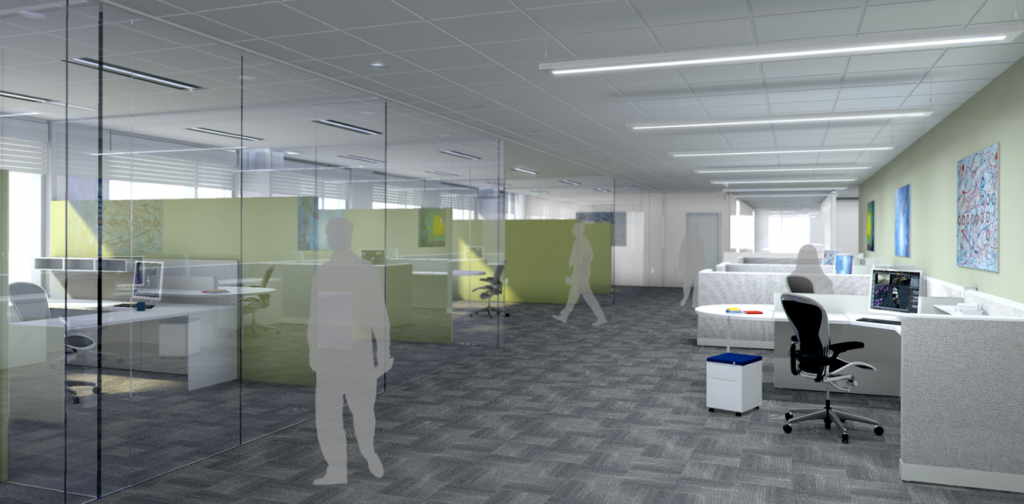 For many types of businesses, keeping architectural rendering services in house is the less attractive of two options. While there might at first appear to be a built in advantage to keep some level of 3D design staff in house, for the most part outsourcing these functions produces a significant cost savings. For companies where the core function is not 3D rendering, outsourcing architectural rendering services is an exceptionally viable cost cutting measure.
For many types of businesses, keeping architectural rendering services in house is the less attractive of two options. While there might at first appear to be a built in advantage to keep some level of 3D design staff in house, for the most part outsourcing these functions produces a significant cost savings. For companies where the core function is not 3D rendering, outsourcing architectural rendering services is an exceptionally viable cost cutting measure.
Examples of the need for architectural rendering services abound. Considering that GE is intentionally known for having "Imagination at Work," this space had to be special and reflect this branding image as clearly as possible. The relative costs of outsourcing architectural rendering services versus hiring an in house architect were dramatically different from one another.
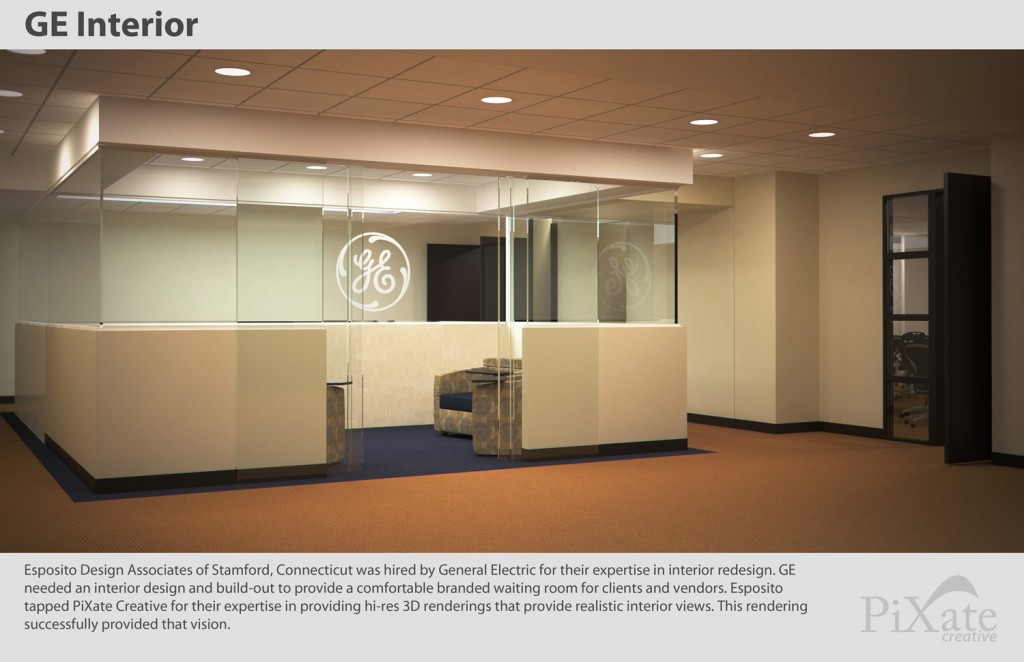
This was not a mere interior decorating job that could have been given to nearly anyone with a reasonable eye for detail. This required a substantial amount of custom installations. These included GE branded glass etchings, chairs with retracting desks to facilitate laptop use and writing and full coordination of every detail in the room's overall decor. From the wall and floor colors all the way to the trim and the lighting fixtures, GE's waiting room required a deep level of design skill. Obviously, an investment of this caliber required a 3D rendering for those in charge to review before the various components could be ordered.
For example, according to the Bureau of Labor Statistics, the average income level for an architect in the Stamford, CT area is $114,230 per year. This figure only considers base salary, not considering any bonuses a successful architect might earn. As well, this figure does not consider other perks, such as the average of three weeks per year of vacation time that an architect receives as part of overall compensation. As well, a highly detailed 3D drawing by an architect can run $1,500-$2,000 and take a day or more. All of these factors contribute to a reasonably large and repeating cost center.
However, to outsource the need for architectural rendering services to an outside company can largely eliminate these costs. While there are some companies that require a full time designer of this nature, and can thus justify the overall costs associated with keeping someone on the payroll, most companies can save a rather large amount of overhead by outsourcing this portion of their service offering. In almost every case, the individual or company they outsource to will be equally competent. The primary difference will be an overall greater level of flexibility offered by outsourcing this portion of the design process versus keeping it in house.
Flexibility is a key component of maintaining the largest margins possible. When a project is on the horizon that requires architectural rendering services, hiring an outside company to handle this aspect of the job can be an excellent way for a company to keep focused on its core offering. When there is no need for such a service, such as during times rich with different kinds of projects, having a leaner payroll enriches other, more core operations.
Hiring a rendering company for architectural rendering services is a good idea when this operation is not a core component of the business that needs such work performed. Construction companies and companies with other kinds of focuses can maintain higher profit margins and trim costs dramatically through outsourcing such designing operations to outside companies. To see our portfolio of our work click here.
Using 3D Illustration to Sell Landscape Architecture
 In order to sell a proposal for a landscape design, landscape architects need to be able to convey a vision. Design starts with understanding the demands of the site and the client, continues with brainstorming solutions, and ends with putting big ideas into action. But no design can move from thought into reality unless the client gets on board with the architect's vision, and signs off on the work. Sometimes paper drawings alone aren't enough to inspire a client. No matter how skilled or beautiful a drawing may be, it doesn't approach the nuanced complexity of a 3D illustration and 3D renderings are a powerful tool in selling a landscape design, because 3D renderings allow clients to see the landscape before it is real.
In order to sell a proposal for a landscape design, landscape architects need to be able to convey a vision. Design starts with understanding the demands of the site and the client, continues with brainstorming solutions, and ends with putting big ideas into action. But no design can move from thought into reality unless the client gets on board with the architect's vision, and signs off on the work. Sometimes paper drawings alone aren't enough to inspire a client. No matter how skilled or beautiful a drawing may be, it doesn't approach the nuanced complexity of a 3D illustration and 3D renderings are a powerful tool in selling a landscape design, because 3D renderings allow clients to see the landscape before it is real.
Utilizing much of the same software used by today's top movie animators, PiXate Creative renderings are stunning displays that capture not only shape, texture, and placement in a three dimensional field, but also nuances of light and shadow, color correction, and fine detailing that make the renderings come alive visually.
PiXate Creative has delivered high-impact, 3D architectural renderings for such clients as Google, GE, and University of New Hampshire. Each rendering is a masterpiece of digital illustration. Stunningly life-like and accurate, these renderings allowed architects and project engineers to overcome design and construction challenges by providing a highly realistic model before the project was built.
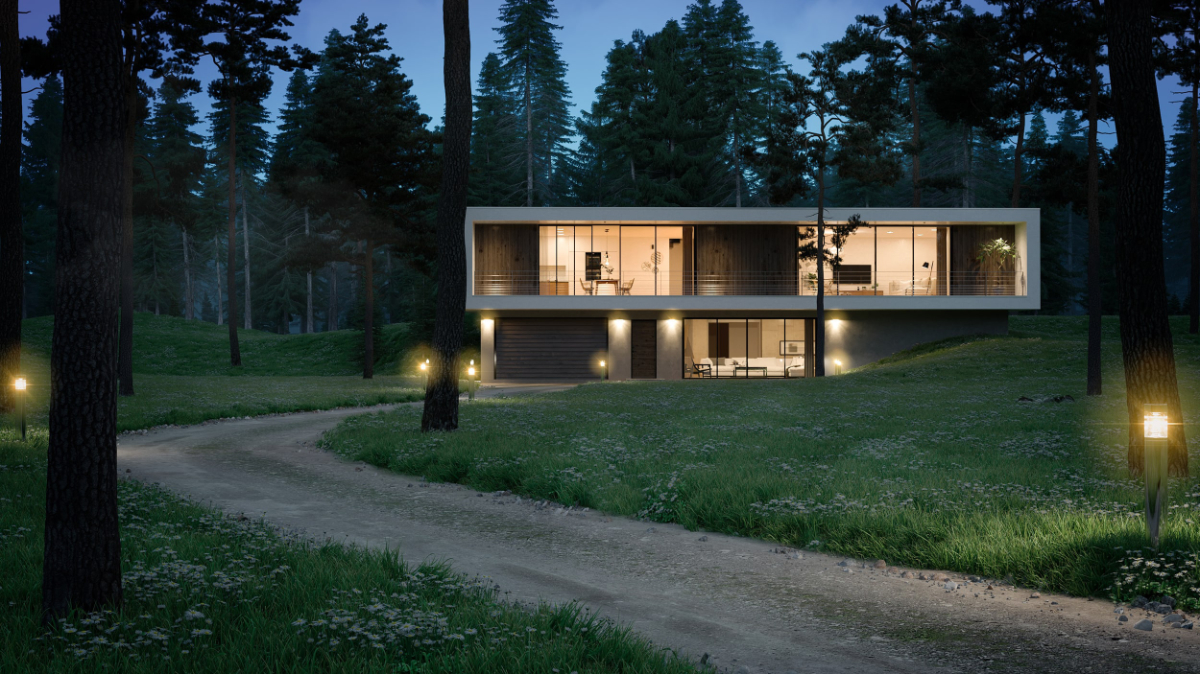
Including a rendering in a pitch to clients, helps landscape architects rise above their competition by carrying across a stunningly beautiful, accurate, and professional-looking rendering of the final product. A design that clients can fully visualize is more likely to be approved, and sometimes two dimensional drawings alone don't do justice to the intentions of the landscape architects.
The challenges of selling a landscape architecture design lend themselves to 3D illustration perhaps even more than those of conventional architecture. While conventional architecture typically employs more geometric shapes and lines, which are easier to both draw and visualize, landscape architects work more with the free-flowing, erratic shapes found in nature. These unconventional shapes are a challenge for clients to picture in their mind's eye, and especially tough to visualize from a two dimensional drawing.
3D rendering allows the viewer to move through the landscape, and see elements from all angles. This more comprehensive picture of the final product can reassure the client that they are getting exactly what they want from the design. It's important for landscape architects and their clients to be on the same page when it comes to the design of a project, and 3D renderings from PiXate Creative can help get them there.
Past architects, engineers, construction managers, builders, and clients have used photo-realistic imagery from PiXate to foresee challenges and bring their ideas to fruition. To hear their stories, see our renderings for specific projects, and get a behind the scenes look at how our process has helped past clients succeed, provide your name and e-mail address. We'll e-mail you a stunning portfolio of final renderings, with a brief case study on each.
3D Rendering For Furniture Companies
 Furniture companies who want to present their products in a catalog that will appeal to customers have traditionally been restricted to carrying out lengthy and often costly photography shoots in an attempt to get the perfect images. Now, 3D rendering could make such tedious activities a thing of the past. Instead of creating models of every piece of furniture that needs to be displayed, furniture companies can now use the services of a 3D rendering company to create computer-generated images of their products.
Furniture companies who want to present their products in a catalog that will appeal to customers have traditionally been restricted to carrying out lengthy and often costly photography shoots in an attempt to get the perfect images. Now, 3D rendering could make such tedious activities a thing of the past. Instead of creating models of every piece of furniture that needs to be displayed, furniture companies can now use the services of a 3D rendering company to create computer-generated images of their products.
The cost benefits of 3D rendering for furniture companies are clear. Every piece of furniture in the company's collection can be digitally created and the images manipulated to get the perfect shot, without a single physical object having to be manufactured, transported, or disposed of after the shoot. This can add up to massive savings for the furniture company through the materials and labor costs that are avoided by using rendering instead of traditional photography to create images for the catalog.
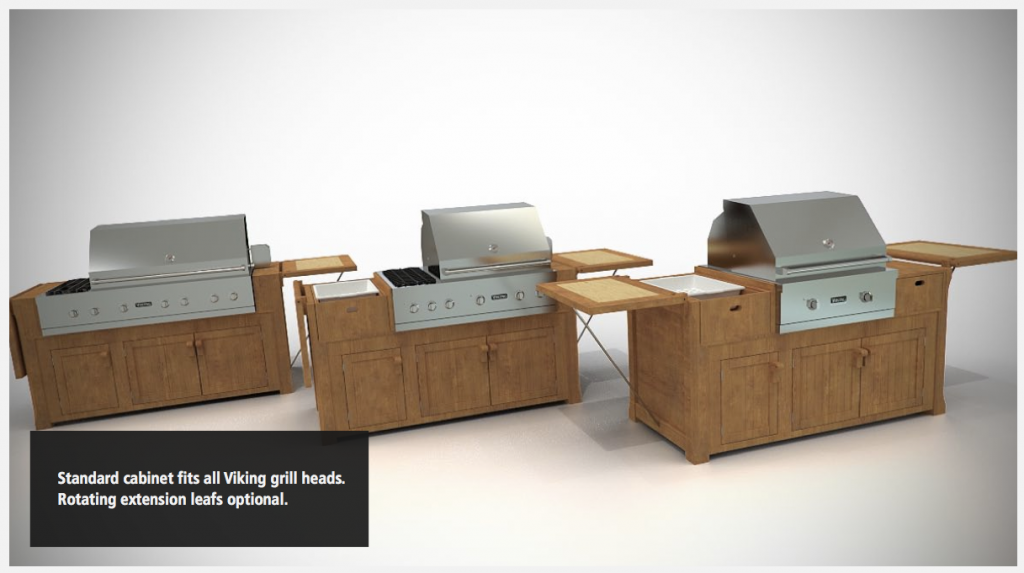 The 3D rendering technology makes it easy to apply different colors to show similar pieces made from different types of wood, fabric, metal or plastic. The results are very realistic - IKEA found that readers of their catalog could not tell the difference between rendered images and photographs of real furniture.
The 3D rendering technology makes it easy to apply different colors to show similar pieces made from different types of wood, fabric, metal or plastic. The results are very realistic - IKEA found that readers of their catalog could not tell the difference between rendered images and photographs of real furniture.
In many cases, the images produced by digital rendering can be even more impressive than those taken by a professional photographer. The number and direction of light sources can be easily controlled through only a few clicks of a mouse, so that every piece of furniture is shown off in the best setting possible. Furniture companies are able to communicate effectively with potential customers who are treated to the best possible images of the furniture available for sale.
The 3D renderings produced by PiXate are highly detailed and precise, allowing furniture makers to show off their chairs, tables, sofas or other pieces of furniture in stunning detail. First, the general shape of the piece of furniture is created. Next, the details such as trimmings and fastenings are added in. The colors are applied at a late stage, just before the final corrections are made. Building up the 3D rendering in this way is a painstaking process that uses large amounts of computer memory, but the final result is well worth the effort.
More information about the rendering process and examples of finished projects are available on the PiXate 3D area on their website. Pixate frequently works with architects, engineers and other professionals, creating 3D renderings that have a strong positive impact in marketing products and raising the professional profile of a manufacturer. New examples of completed work are regularly added to Pixate's online portfolio; please provide your email address to be kept up to date with the latest news and get access to more information.


